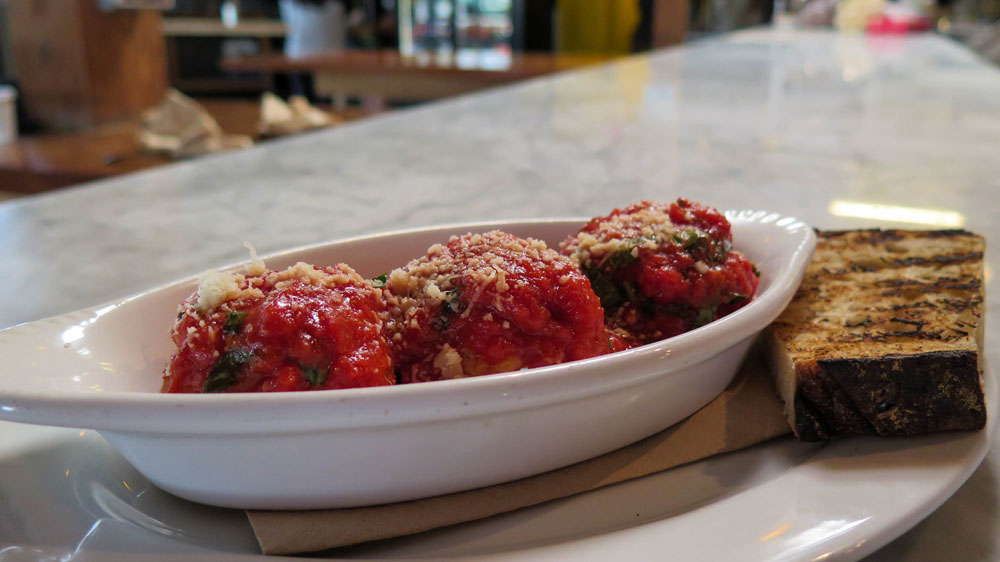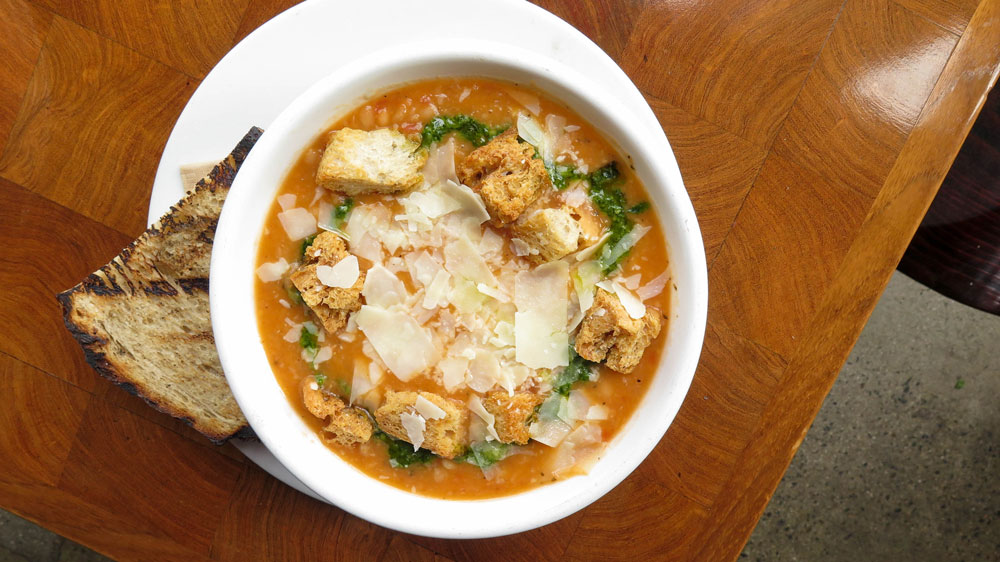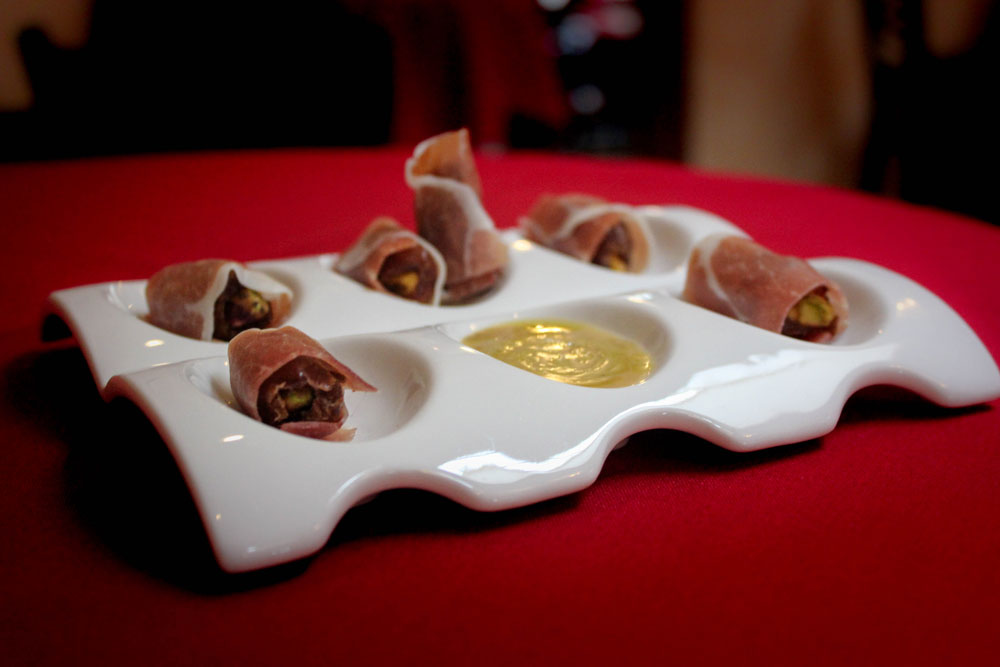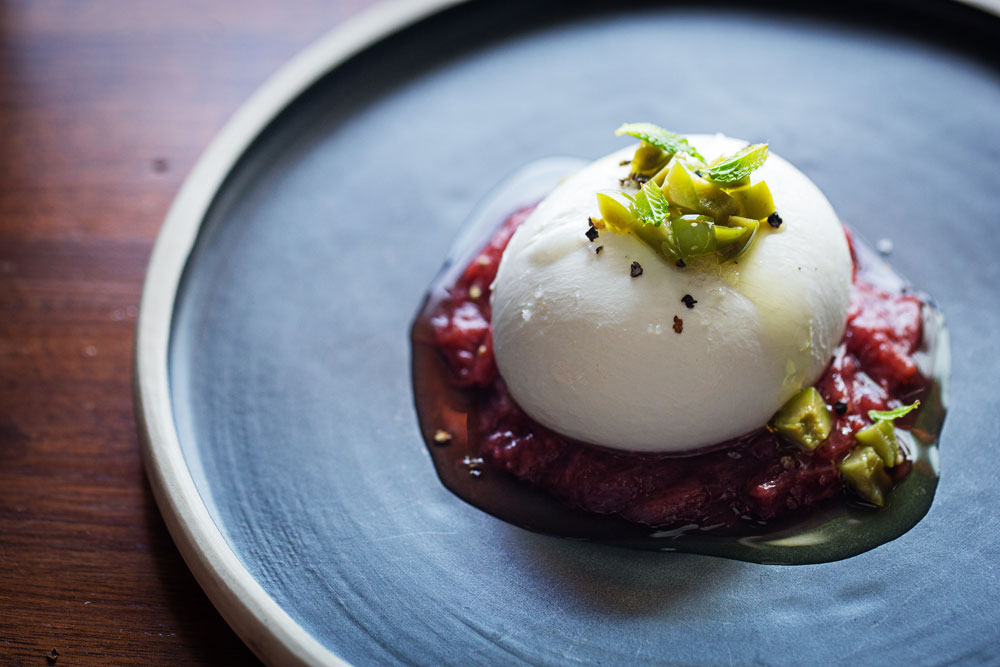Small plates boast cross-demographic appeal, from baby boomers to millennials. But they also offer significant benefits to pizzeria operators: attracting new customers, inspiring special events, diversifying your catering business, reducing food waste, promoting healthier eating, and creating opportunities for increased sampling.
In 2015, the National Restaurant Association reported that 56% of chefs categorized small plates as a hot trend, while 22% called them a perennial favorite. As small plates have swept the nation, they appear to be here to stay, and they’re the perfect—and highly profitable—sidekicks for pizza.
 |
|
The Roasted Chicken Meatball dish, served with grilled bread from Superba Food + Bread, appears on the Shared & Smalls menu at Pitfire Pizza. |
4 Reasons Why Smaller is Better
| Potential Pitfalls |
| Small plates create a more social environment and enhance the dining experience, but developing a high-functioning small-plate program is harder than it sounds, says Greg McNally, principal consultant at Restaurant Profit Technologies in Hermosa Beach, California. “It can be confusing to the American consumer,” notes McNally, who consulted for two small-plate concepts last year. “By the time the server has spent time explaining the menu, the service [starts to feel] inefficient. The restaurant needs more of a selection to satisfy the tasting experience, possibly leading to more items to purchase and hold in inventory; more prep; and more spoilage, waste and mistakes. And it can be hard to keep consistency with so many ingredients. It takes a very skilled operator to pull it off!” |
1. Small plates offer a logical add-on, without commitment. Tony Conte, chef/owner of Inferno Pizzeria Napoletana in Gaithersburg, Maryland, hopped on the small plate bandwagon after larger portions of proteins sold with limited success. “The moment we make them into a small plate, we move them,” he says. “People are coming here to eat pizza. An entree throws them off, but a small plate gives them something different in addition to pizza.” Other benefits: They’re easier to jazz up visually, while obtaining unique ingredients (and keeping them pristine) is easier in small qualities.
2. They encourage communal dining. Pitfire Pizza, with eight locations in Southern California, offers a menu section called Shared & Smalls for patrons to enjoy while their pizzas cook in the wood-fired oven. “This enhances the guest experience and builds sales for the restaurant,” notes CEO Jeff Goodman. “All of our guests really enjoy dining that way. We’re having great success with some of our newer sharable items, especially the salumi board, featuring prosciutto and meats along with whipped ricotta and homemade flatbread.”
3. Smaller portions maximize productivity. A couple of years ago, Jay Gust, owner/executive chef at Pizzeria Rustica in Colorado Springs, Colorado, was losing scads of money on busy nights, having to turn away 40 to 50 people per weekend night. So, in 2015, he opened the attached Enoteca Rustica, an upscale Italian wine bar that serves as a waiting area where customers can grab a nibble with wine, beer or a craft cocktail. The menu at Enoteca is small plate-focused—think wood-roasted olives with spiced candied hazelnuts or pistachio-stuffed dates wrapped in prosciutto. “We do a lot of cross-utilization, so we go through ingredients in timely fashion,” Gust says. “Our whole liquor program tripled, and the small plates have been very well-received. Plus, we can feature different specials up there. It’s like the test market for new menu items.”
4. They broaden your customer base. As a restaurant consultant, Nicole Biscardi, director of operations for Allday Industry in New York City, works with famous pizzerias like Brooklyn-based Roberta’s, many of which offer small plates. “They provide options to those with dietary restrictions and may increase the frequency of customer visits by creating a greater mix, beyond the typical pizzeria staples,” she explains. “Small plates can also drive new customers and open up additional revenue streams though special events or theme nights. You can host ‘Sunday suppers’ by simply adding a few pastas, salads and some meatballs to your menu.”
Small Plates, Big Bucks
| Think Small |
| Little things mean a lot, especially when they’re done right. Nibble on these additional tips for creating a small-plates menu.
“Because they are small plates, they need to leave a lasting impression. You have to make them memorable.” —Tony Conte, Inferno Pizzeria Napoletana “Make small plates quick and easy to prepare. You don’t want something that takes 10 minutes; shoot for 3 to 4.” —Jay Gust, Pizzeria Rustica “The Shares & Smalls section takes up prominent real estate on our menu. Our cashiers and servers know to ambassador those items as a shareable first course while they’re waiting for their other food to arrive.” —Jeff Goodman, Pitfire Pizza |
Small plates may cost more than high-profit pizza, but they allow you to save in other ways. Conte reports he can keep costs low by getting more out of each ingredient. “If you bring in a case of chicken, you can sell half of the bird as a main dish for X amount of dollars,” he says. “Or you can drop the price by a dollar or two, serve the breast only, with vegetables and sauce, then braise the leg as a component in a pasta dish. Utilizing the entire product in different ways doubles or triples profit, stretching it farther to make more money.”
Small plates are also a great way to cross-utilize existing ingredients and reduce waste. “A careful assessment of existing waste can shape small plate offerings,” Biscardi says. “If arugula is used as a specialty pizza topping, also use it as the base for a salad or as an accoutrement for rice balls. With proper cross-utilization of ingredients, food cost should remain sub-30% and linger more in the 24% to 26% range. And the overall food cost can be balanced and offset by additional revenue growth due to the diversity of the new offerings.”
Want to create a big buzz around your small plates? Biscardi suggests in-store ads, basic signage, menu-based communications like inserts or table tents, and well-trained staff members. Gust uses a variety of social media—Instagram, Twitter, Facebook—and lists suggested wine pairings on the Enoteca menu. And Conte hosts tastings with an opinionated server so she can enthusiastically suggest her favorites to customers.
 |
|
Along with a salumi board and a green salad, Pitfire Pizza’s small-plates menu includes a White Bean Soup that comes in two sizes for $4 and $6. |
The Menu Mix
Small plates can easily cater to diners with special dietary needs, such as vegan, vegetarian or gluten-free—and you can try new approaches on a whim. “Our repeat customers are looking for something new, and small plates are easy to change daily,” Conte says. “We also have an influx of people watching what they eat or who are gluten-free, plus quite a few vegetarians and a few vegans, so we take that all into account when creating the menu.”
Conte makes sure he’s not repeating ideas, so customers know they have to act fast if they see something of interest. He also adds nightly specials—or, if he gets a special ingredient, he might prepare it one way on a Friday and switch it up for Saturday. “Small plates fit everybody,” he says. “Larger tables can get a nice sampling of what we do here by ordering one of everything.”
 |
|
Pizzeria Rustica opened the small plates-focused Enoteca Rustica in 2015, serving artisanal items like pistachio-stuffed dates wrapped in prosciutto. |
Chefs also recommend working seasonally when crafting a small plate menu. Gust works closely with local farmers, sourcing ingredients like heirloom tomatoes. “As things become delicious and plentiful in each season, we tailor our menu to highlight those products, which naturally drives more healthy options,” Goodman adds.
Finally, looking at your menu as a whole, ensure you maintain a good balance and clearly label dishes that meet certain dietary needs. “Salads, proteins and other low-carb and/or nondairy options will help provide choices to those who cannot or choose not to eat pizzeria staples,” Biscardi says. “Generally, a good mix of healthful and indulgent small plates is a good approach. And I think it’s important to listen to your customers. They’ll tell you what they want—it’s your job to simply listen!”













